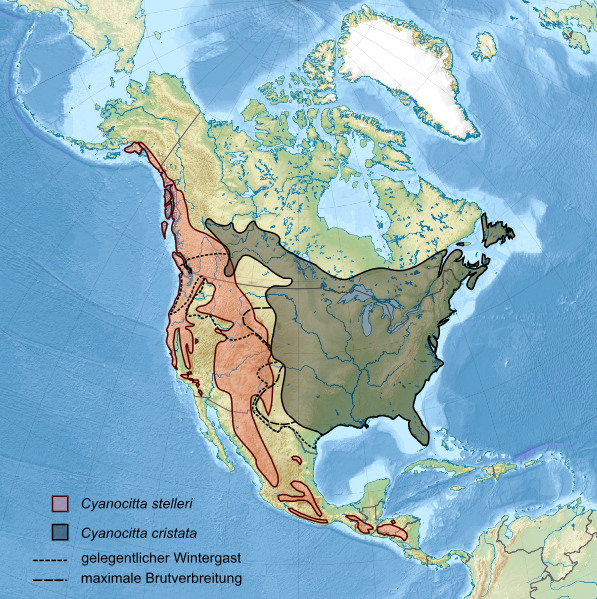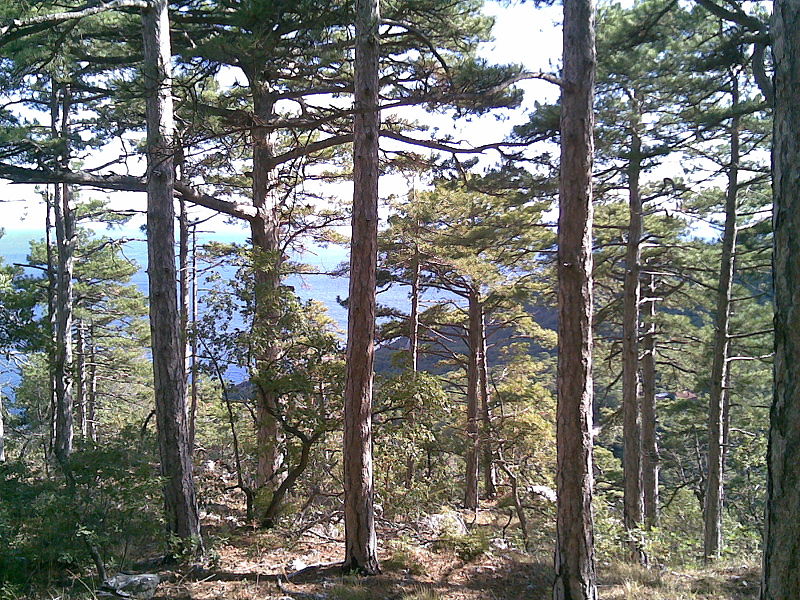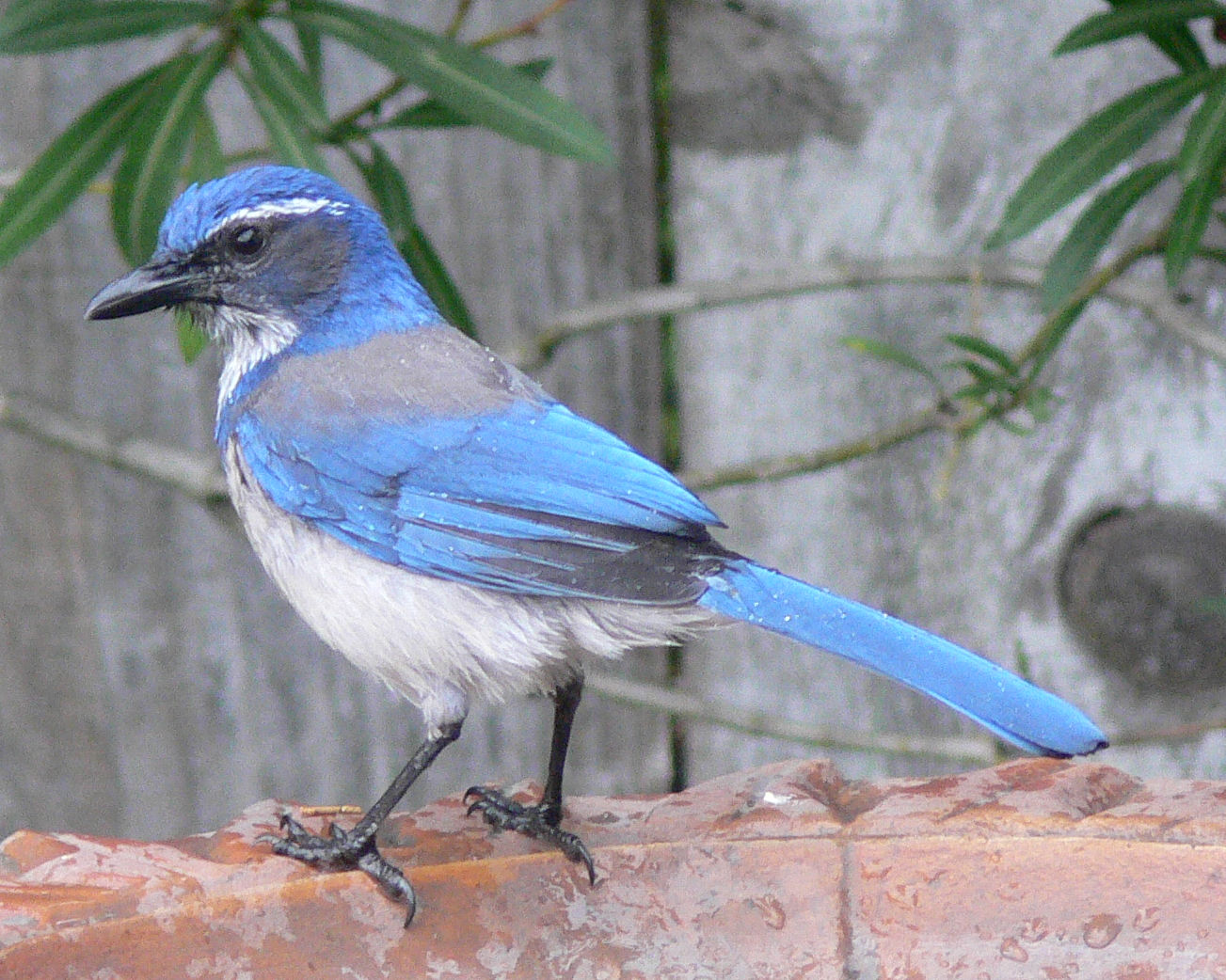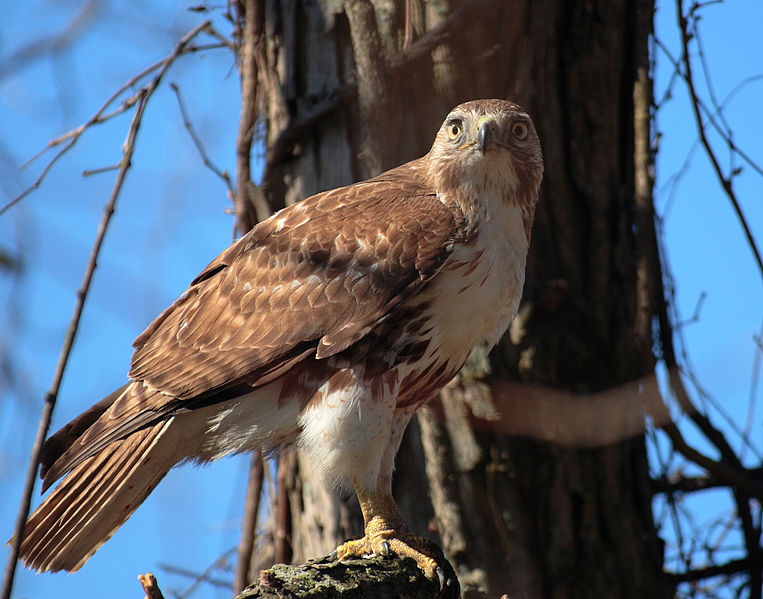Habitat
Range
Cyanocitta stelleri, otherwise known as Steller’s Jay
is known to have a large range in western North America.
Steller’s Jay can be found anywhere from the southern coast of
Alaska to North Central Nicaragua. The range follows the
Rocky Mountains down from Alaska all the way to Nicaragua (ADW 2001). These birds can also be found as far
west as the Pacific Coast and as far east as Eastern Colorado.
The Steller’s Jay’s range covers a large area and it can be
found in seven countries including Canada, United States, Mexico,
Honduras, Guatemala, Belize, and Nicaragua.
The map to the right compares the ranges of Steller's Jay (Red) and the Blue Jay (Black). Theses birds have come in contact in Colorado and other states along their range border.
Habitat
Steller’s Jay can be found in dense coniferous forests,
coniferous-broadleaved woodlands, and deciduous forests. The
number of jays tends to increase near breaks in the forest (Mann 1983).
Steller’s Jay also stick to the cover of the high canopy in the trees.
Steller’s Jay are typically found in elevations between three thousand
and ten thousand feet (AAB 2005). In some cases they
may be found at lower elevations such as the evergreen forests of the
Pacific coastal foothills. They have also adapted to environments
alongside humans such as campgrounds, parks, and backyards (AAB 2005).

Nest Location
Steller’s Jay tends to build nests in conifers when possible. They
will also use deciduous trees when they have a lot of leaves.
Trees near clearings are usually favorable to Steller’s jay compared
ones deeper in the forest (Mann 1983, Vigallon and Marzluff 2005).
Trees with more dense leaf cover are also preferred when considering a
nest location. They typically live in a nest built from the twigs
and needles acquired from the tree. Steller’s Jay also use mud to
build the nest. Nests are typically 3.5 meters or higher in young
trees (Mann 1983). The nests are usually near the top of the tree
but nests have been seen in bushes near the ground. The Steller’s
Jay has a habit of building nests on horizontal branches close to the
trunk of the tree (Brown 1930). In some cases they have adjusted
to urban environments by building nest under roofs. Nests are also
commonly found near windows, buildings, and paths. In some cases
nests have also been found in barns and other buildings. Although
nests have been found in urban and suburban environments the amount of
nests increase with more tree cover and decrease with more roads and
infrastructure (Kalinowski and Johnson 2010).
Animals sharing the same habitat
Some other birds that have overlapping range include Clarks Nutcracker
typically found at higher elevations and the Scrub Jay found at lower
elevations. Steller’s Jay often steals food from Clarks Nutcraker,
Gray Jay, and the Acorn Woodpecker. In the southern portion of the
Steller’s Jay’s range it also comes into contact with the Mexican Jay.
Some common trees used for nests that are found in the Steller’s Jay’s
range are
Douglas-fir, western hemlock, amabilis fir, grand fir, Sitka
spruce, western red cedar, and arid-pine oak. Common predators
sharing a habitat include Cooper’s Hawk,
Red-tailed Hawk, Common Raven,
and Northern Goshawks (Greene et al 1998). Red squirrels also
share the habitat and have been known to eat Steller’s Jay eggs.
Migration
During the winter Steller’s Jay have appeared in desert habitats.
Steller’s Jays don’t tend to migrate but groups that mate at higher
elevations do typically move to lower elevations during the winter.
In some cases younger birds travel in flocks and can be found outside
the normal range (AAB 2005). Steller’s Jay has been
spotted multiple times outside the normal range in Saskatchewan, South
Dakota, Kansas, and central Texas. Even though they don’t migrate
as a species, individual birds have been known to travel several-hundred
kilometers (Greene et al. 1998).
Back to Classification Forward to Adaptation


